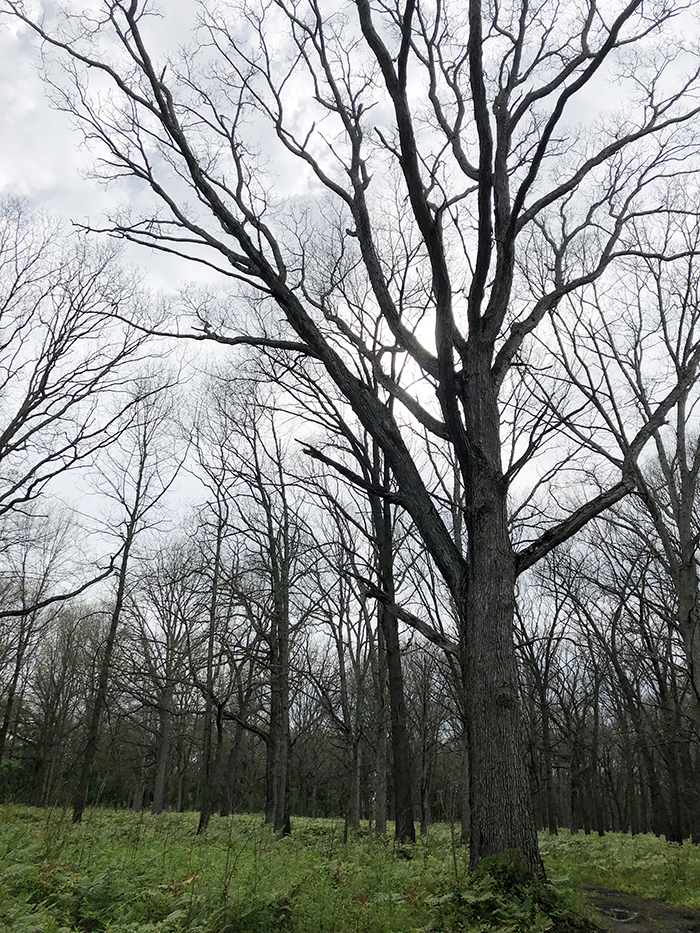
By Pam Wright
Local Journalism Initiative Reporter
The reviled European gypsy moth is back and threatening trees in Chatham-Kent.
The spiky black and orange caterpillars descend on trees, devouring every leaf .
Ken Ashton, who has woodland property located in East Kent, is one resident who is worried about the effects of infestation, as he’s spotted a few trees near Duart that have been stripped by the pest.
Ashton is no stranger to the gypsy moth having observed the insects throughout his life, but he said he’s more worried than normal.
“For some reason this year, they seem to have attacked more,” Ashton said. “If they get going, they’re going to clean them (oak trees) up.
“I’m concerned,” he said. “We’re worried about protecting trees in other ways in Chatham-Kent.
“This is a problem.”
The eggs of the gypsy moth overwinter on the bark of trees. In the spring, the larvae hatch and march up the trees to feed on the new leaves in the spring.
Spongy egg masses can be see on tree trunks and branches, followed by pupae and adult moths in July and August.
Randall Van Wagner, manager of conservation lands for the Lower Thames Valley Conservation Authority, said infestations of the invasive species are cyclical and occur about every seven to 10 years.
Infestations are also weather dependent, he added, noting extremely cold winters tend to kill the eggs.
Mild winters may be contributing to a rise in eggs surviving the winter, he added.
The insects favour Oak trees, Van Wagner said, adding there are eight species of oak within the watershed that could be affected.
Van Wagner said the province has pinpointed an infestation in the forest in Skunk’s Misery in Middlesex as many trees are defoliated near Bothwell.
However, he said, he hasn’t been made aware of any major infestations in Chatham-Kent.
Van Wagner said that most of the time, the caterpillars won’t kill the tree.
The European gypsy moth is another example of a good idea gone wrong.
Van Wagner said the insect was originally brought to Massachusetts in the 1880s for potential silk production, but was accidentally released into the wild.
With no natural predators, it began to spread.
Spraying has been found to be effective against the moth, but it has to be done early in spring and it’s too late this year.
Property owners can also take steps against the moth.
From mid-May to June burlap bands can be attached to tree trunks, catching the caterpillars, which are then discarded.
From June to July, residents are advised to remove the caterpillars by hand.
From August on until the spring, property owners are advised to remove egg masses from trees and discard them.
The Ontario government’s website said the infestations tend to last two years before abating.







There is an infestation in Chatham on McNaughton Ave. along the stretch in front of Tecumseh School for the second year in a row. The city was notified by me in early spring about the abundance of egg “pods on the trees from Juliette to Northland. I emailed them several times and encouraged them to be “proactive” instead of “reactive”. They chose to do nothing! Last year three trees in that stretch had to be taken down from the stress put on them. In my opinion whoever is in charge of the city works department should be fired for their negligence!